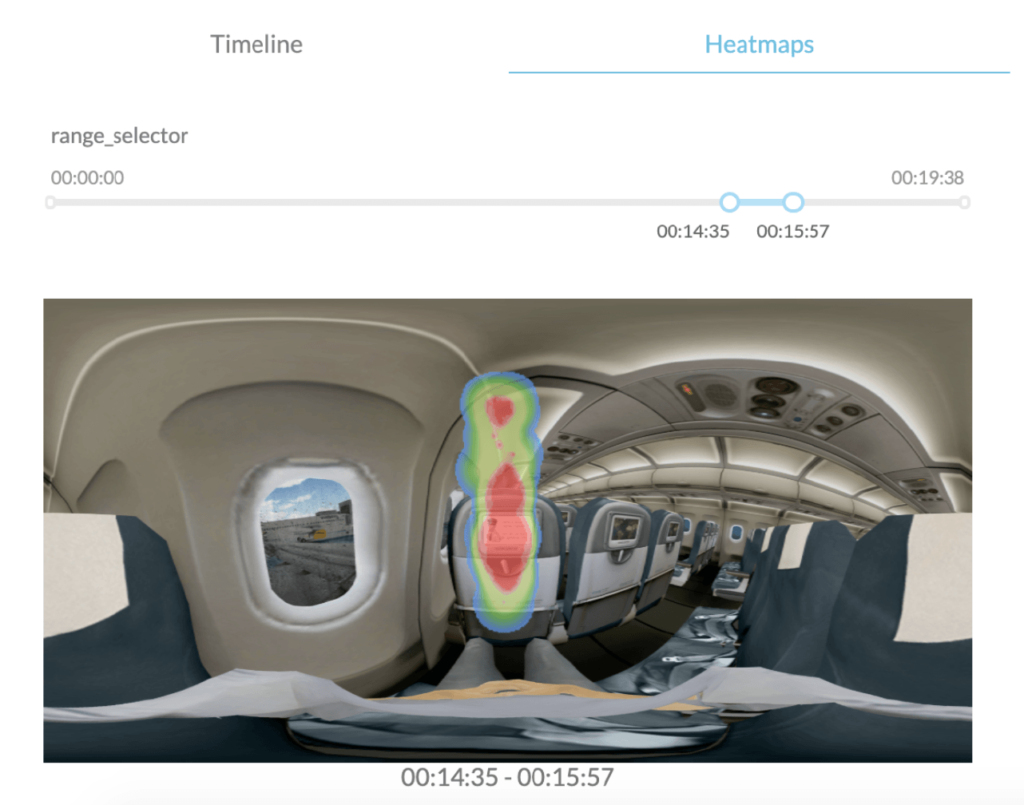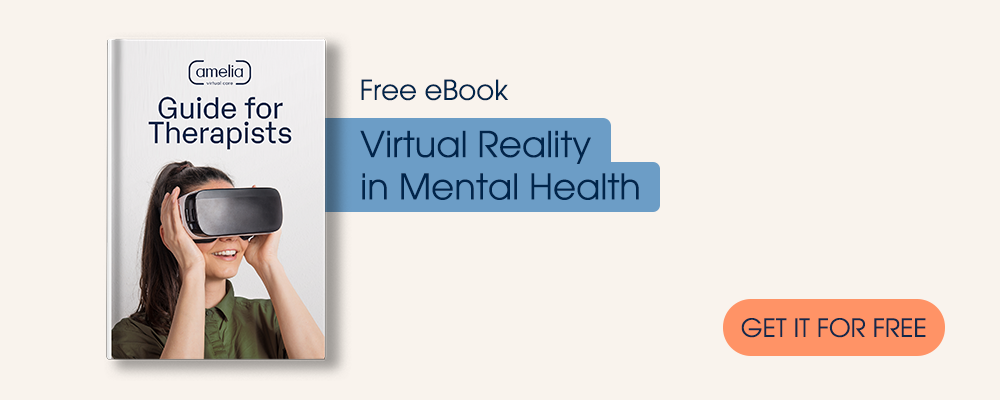Knowing Amelia Virtual Care: The Heatmaps
Amelia Virtual Care heatmaps (PHMs) are graphic representations within which colors are used to highlight the most viewed areas in a virtual scene. These representations are based on thermography. PHMs are meant to portray the orientation of the patient’s head inside virtual reality environments. This method offers crucial information on the user’s behavior. In order to be visually interpreted, PHMs require scenic context and an understanding of events activated within said context. To collect that information, Amelia.pro stores the direction of the patient’s head every 0.3 seconds and uses that information to create a graphic portrayal which is superimposed over an equirectangular image of the virtual scene, such the scene of an airplane during takeoff while the patient is seated by a window in good weather. One must bear in mind that the data from a PHM is directly related to time.To create an accurate representation of the head’s position and time in which that position was maintained, a color gradient is used (green-red). In this gradient, the area colored represents the places where the patient looks and the color represents how long the user looked in that direction. Reds represent the areas looked at for the longest time, while cool colors (greens-blues) highlight the areas with which the patient has interacted the least. Uncolored areas indicate zero interaction. On the Amelia.pro platform, each heatmap is related to a scene. By changing the virtual environment, a new storage of information begins.Ultimately, the general purpose of PHMs is to help determine our patient’s orientational behavior when using a virtual environment for a specific period of time. Moreover, we can collect broad information on the patient’s interaction within an environment when compared with the total duration of a scene or adjust it for a specific time period.
What do the Amelia Virtual Care Heatmaps contribute to your practice?
PHMs are behavioral measurements which complement subjective self-reported and physiological measures, ultimately providing required information on a triple response channel (behavior, physiology and cognition). You will be able to operationalize the change of certain variables between the beginning and the end of the session. For example, you can assess whether the patient demonstrates exploratory behavior when starting the environment, or whether they are initially immobile and, as their anxiety eases, they become more exploratory. You can also establish therapeutic objectives and hypotheses to compare them with the information provided through Amelia’s heatmaps.Another way to use these behavioral measures during intervention is by comparing PHMs between sessions. If, for example, the patient has carried out the same therapeutic task (exposure to an environment to work anxiety, attention training through mindfulness…) in different sessions, the PHMs can be useful in monitoring changes during training.Finally, it should be noted that another useful way of monitoring therapeutic change is making comparisons, in relation to therapeutic objectives, between the evaluation session and the last intervention session and between the evaluation session and follow-ups.
Information on the patient’s behavior
Amelia Virtual Care heatmaps are yet another tool within the Amelia.pro ecosystem. The main purpose of PHMs is to provide information on the patient’s behavior when interacting with a virtual environment. This information is a systematic measurement put to practical use (area and time of interaction by the patient with the virtual scene) regarding the patient’s non-verbal behavior over a time period specified by the therapist, whether in a full session with different environments and scenes, one specific scene, or even a part of one scene or what happened right after executing a specific event.Within Amelia.pro, PHMs are yet another measurement which, coupled with the information that can be collected from the patient through self-reporting (Subjective Anxiety Units, Attention, Pain, Craving, etc.) and objectively (Skin Conductance Level), make it possible to perform overall evaluation and monitoring of the patient while he or she is situated within a virtual environment.All the data about your patients and all the content made during the sessions is stored in the Reports section of the Amelia.pro side menu.If you are interested in learning more about the features of Amelia.pro, contact us to schedule a free demo session. Amelia Virtual Care is the most flexible virtual reality platform to personalize your therapeutic interventions and incorporate new technologies in your practice.
Other articles that might interest you:
- VR Therapy is Revolutionizing Care for Substance Use Disorder
- Answer 4 Common Questions from Patients about VR Therapy Effectively
- The effectiveness of virtual reality in the treatment of glossophobia













